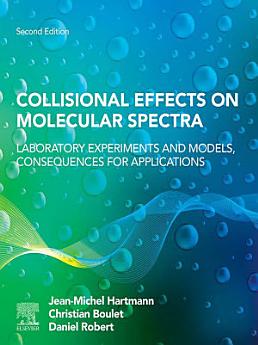Collisional Effects on Molecular Spectra: Laboratory Experiments and Models, Consequences for Applications, Edition 2
Jean-Michel Hartmann · Christian Boulet · Daniel Robert
Jan 2021 · Elsevier
Ebook
576
Pages
family_home
Eligible
info
reportRatings and reviews aren’t verified Learn More
About this ebook
Gas phase molecular spectroscopy is a powerful tool for obtaining information on the geometry and internal structure of isolated molecules and their interactions with others. It enables the understanding and description, through measurements and modeling, of the influence of pressure on light absorption, emission, and scattering by gas molecules, which must be taken into account for the correct analysis and prediction of the resulting spectra. Collisional Effects on Molecular Spectra: Laboratory Experiments and Models, Consequences for Applications, Second Edition provides an updated review of current experimental techniques, theoretical knowledge, and practical applications. After an introduction to collisional effects on molecular spectra, the book moves on by taking a threefold approach: it highlights key models, reviews available data, and discusses the consequences for applications. These include areas such as heat transfer, remote sensing, optical sounding, metrology, probing of gas media, and climate predictions. This second edition also contains, with respect to the first one, significant amounts of new information, including 23 figures, 8 tables, and around 700 references.Drawing on the extensive experience of its expert authors, Collisional Effects on Molecular Spectra: Laboratory Experiments and Models, Consequences for Applications, Second Edition, is a valuable guide for all those involved with sourcing, researching, interpreting, or applying gas phase molecular spectroscopy techniques across a range of fields. - Provides updated information on the latest advances in the field, including isolated line shapes, line-broadening and -shifting, line-mixing, the far wings and associated continua, and collision-induced absorption - Reviews recently developed experimental techniques of high accuracy and sensitivity - Highlights the latest practical applications in areas such as metrology, probing of gas media, and climate prediction
About the author
Jean-Michel HARTMANN: born in 1961, « Directeur de Recherche » for the French CNRS (Centre National de la Recherche Scientifique has been carrying research and advising PhD students in the field of the book for about twenty years. He is the director of the French Molecular Spectroscopy Network and the author of more than 100 publications in international journals.Christian BOULET: born in 1947, Professor at Université Paris XI (Orsay) has been carrying theoretical researches in the field for more than 30 years and is the author of about 130 publications in international journals. He has been the director of the Laboratoire d'Infrarouge and of the Laboratoire de Physique Moléculaire et Applications.Daniel Robert: born in 1940, "Emerite professor at Franche Comté University (besançon) is also a theoretician of line-shapes who has been working in the field for more than 30 years and who is the author of about 120 publications in international journals. He has been the director of the Laboratoire de Physique Moléculaire (Besançon
Rate this ebook
Tell us what you think.
Reading information
Smartphones and tablets
Install the Google Play Books app for Android and iPad/iPhone. It syncs automatically with your account and allows you to read online or offline wherever you are.
Laptops and computers
You can listen to audiobooks purchased on Google Play using your computer's web browser.
eReaders and other devices
To read on e-ink devices like Kobo eReaders, you'll need to download a file and transfer it to your device. Follow the detailed Help Center instructions to transfer the files to supported eReaders.





